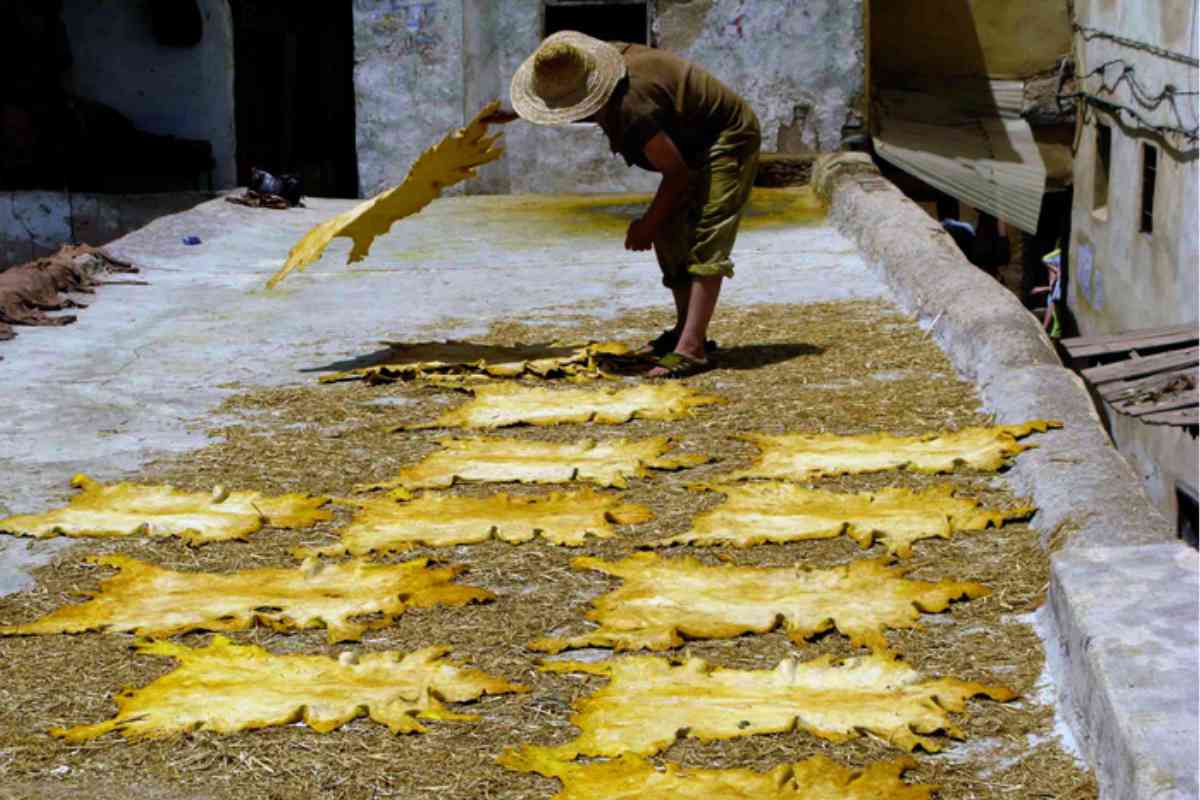
The processing of leather and fur may have played an important role in early humans’ ability to migrate to colder parts of the world during the Pleistocene.
The Contrebandiers Cave in Morocco is an interesting place. Excavated animal bones have revealed that our early ancestors were found in this cave between 120,000 and 90,000 years ago. To learn more about their diet, researchers in a new study to study the bones found here more thoroughly. But surprisingly, they soon realized that the bones they had found aren’t just meal scraps…
Contrebandiers Cave
As mentioned, well-preserved fossilized bones belonging to both humans and animals have been recovered several times in the Moroccan Contrebandiers cave. “In addition, stone tools have also been discovered in the cave,” Emily Hallett told Scientias.nl. “These artifacts date from a period of great importance to our understanding of human origins. We know that new forms of tool use – think of personal decorations – first appeared in the archaeological archives of Africa about 100,000 years ago. And the Contrebandiers Cave dates from this interesting period in human evolution.”
animal bones
The researcher was mainly interested in the animal bones found in the cave. “I wanted to recreate the diet of early humans,” she says. “In addition, I wanted to see if there were any dietary changes associated with changes in stone tool technology.” But when she bent over the bones with her team, she discovered something completely unexpected. “The bones have signs of shape and use that suggest they were used for processing leather and fur,” Hallett says. “In addition, I found noticeable cuts that suggest that people were not processing carnivores for meat, but instead skinned them for their fur.”

Using tools made from animal bones, carnivores were skinned for fur. Image: Jacopo Niccolò Cerasoni 2021
It’s a remarkable discovery. For it means that some of the animal bones found in the Contrebandiers cave do not represent cliques, but are useful tools used for working leather and fur. “What’s particularly striking is that similar bones are still being used for the same purposes today,” Hallett says. “Bones are great for scraping hides because they leave the skin whole and don’t pierce it.”

This image shows a bone tool from the Moroccan Contrebandiers Cave. This object was used for working leather 120,000 to 90,000 years ago. Image: Jacopo Niccolò Cerasoni
Clothing
Why did our distant ancestors work leather and fur? The answer is probably already obvious. For leather and fur may well have kept the early inhabitants of the Contrebandiers cave warm. It means that the bones discovered in Morocco cautiously suggest that our ancestors were already making clothes 120,000 years ago. “Genetic studies have revealed that clothing originated in modern humans at least 170,000 years ago in Africa,” Hallett says. And so it is quite possible that our distant ancestors used animal bones to make clothing.
Definite proof
In fact, clothing made of fur and skin is believed to have played an important role in the ability of our distant ancestors to migrate to colder parts of the world during the Pleistocene epoch. However, it is difficult to make definitive statements about this. “Fur and other organic materials generally don’t keep well,” explains Halett. “And especially not in deposits that are 100,000 years old. That is why we have to make do with bits of evidence such as tools and bones that have left traces. We can then put these pieces of evidence together and suggest that these early humans wore clothes. However, there are many other uses of leather that we cannot rule out.”
In any case, what the findings do show is that early humans were innovative problem solvers. “Just like people today,” Hallett said. The researcher is very curious if other archaeologists will find similar skin marks on other animal bones. In addition, she plans to create her own bot tool and use it in a controlled environment. Because in this way she hopes to gain more insight into the time and labor that must have gone into making and maintaining such objects.
Source material:
“Study suggests earliest use of bone tools to produce clothing in Morocco 120,000 years ago– Arizona State University
Interview with Emily Hallett
Image at the top of this article: Emily Yuko Hallett, 2009